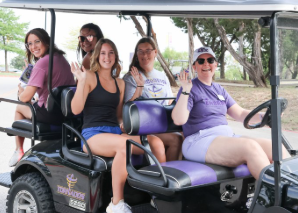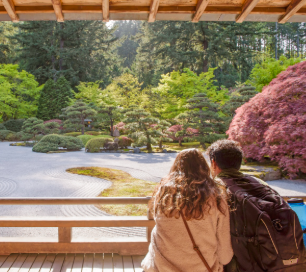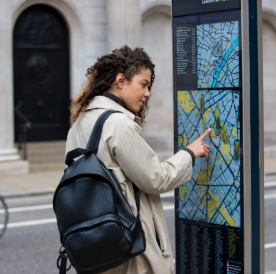Living in a multicultural environment is one of the most enriching experiences anyone can have, and in the United States, this diversity is woven into the very fabric of daily life. From bustling cities to small towns, Americans are surrounded by a rich tapestry of cultures, languages, cuisines, and traditions. Experiencing this diversity daily does more than expand one’s worldview; it fosters a deep sense of joy, connection, and understanding.
One of the most immediate joys of multicultural living in America is the opportunity to meet people from all corners of the globe. Walking down the street, shopping in local markets, or attending community events, it is common to hear different languages and witness a variety of customs. This everyday exposure creates a natural curiosity about others, encouraging conversations that might never happen in a more homogeneous environment. Such interactions can lead to friendships that span continents, bridging cultural gaps and creating a sense of global connection within one’s own neighborhood.
Food is perhaps the most tangible and delightful way in which multicultural living brings joy. The United States offers a remarkable culinary landscape, where a single city might host Italian trattorias, Mexican taquerias, Indian curry houses, and Ethiopian coffee ceremonies all within walking distance. Trying dishes from different cultures allows people to taste the creativity and history of a community. Sharing meals across cultural lines often becomes a celebration of both differences and commonalities. A simple dinner can spark stories about family traditions, childhood memories, and celebrations, deepening bonds between friends and neighbors.
Cultural festivals and events further enrich everyday life by transforming ordinary spaces into lively celebrations of diversity. From Lunar New Year parades to Diwali celebrations, Juneteenth commemorations, and Cinco de Mayo festivities, communities across America organize events that honor their heritage while inviting others to participate. These gatherings offer more than entertainment; they are opportunities to learn, engage, and understand. Observing traditional dances, listening to music from different regions, or trying a new craft can evoke a sense of wonder and excitement that transforms a routine weekend into a memorable experience.
Language is another vital aspect of multicultural living that adds joy to everyday experiences. Hearing different languages spoken around town, in schools, or at workplaces encourages both appreciation and curiosity. Even a small effort to learn greetings or expressions in another language can open doors to meaningful connections. This daily linguistic exposure not only improves communication skills but also cultivates empathy, patience, and an understanding of how cultural context shapes communication. The process of learning a new language or simply exchanging a few words with someone from another background can spark delight and a sense of accomplishment.
Multicultural living also encourages adaptability and resilience, which contributes to personal growth and satisfaction. Encountering different cultural norms, traditions, and perspectives challenges individuals to think creatively, question assumptions, and approach problems from multiple angles. These experiences cultivate open-mindedness and flexibility, qualities that are not only valuable in personal life but also highly prized in educational and professional settings. The joy here lies in the small victories—successfully navigating a cultural misunderstanding, celebrating a holiday you previously knew little about, or finding common ground with someone whose upbringing differs greatly from your own.
The educational environment in America, especially on college campuses, amplifies the benefits of everyday multicultural living. Students are constantly exposed to peers from diverse backgrounds, and classroom discussions are enriched by a variety of viewpoints. Group projects, study sessions, and extracurricular activities become platforms for collaboration and mutual learning. Beyond academics, these experiences teach students to appreciate differing perspectives, recognize the value of cultural knowledge, and form friendships that can last a lifetime. Even outside the classroom, dining halls, libraries, and dormitories become spaces where cultures blend seamlessly, and joy arises from shared experiences.
Another source of everyday joy is the arts, which flourish in multicultural settings. Art galleries, theaters, and music venues showcase performances and works from diverse traditions, creating opportunities for cultural exploration. Street murals, public art installations, and local exhibitions often highlight stories from immigrant communities, historical events, and contemporary cultural expressions. Engaging with these forms of art provides a window into experiences different from one’s own while sparking reflection, inspiration, and emotional connection. The joy comes not only from witnessing creativity but also from the sense of inclusion that multicultural art fosters.
Neighborhoods and local communities in America often reflect the country’s multicultural spirit, creating an atmosphere of inclusion and collaboration. Community gardens, cultural associations, and volunteer groups bring people together around shared interests while honoring diverse backgrounds. Working alongside neighbors to celebrate a cultural festival or support a local cause strengthens community bonds. These interactions make daily life richer, warmer, and more meaningful. There is a unique satisfaction in witnessing how multicultural collaboration can transform a shared space into a vibrant, welcoming environment.
Technology also plays a role in enhancing multicultural living by connecting people with global experiences without leaving home. Social media, online language exchange platforms, and streaming services provide access to cultural content from around the world. Watching international films, participating in virtual cooking classes, or joining online cultural discussions allows individuals to explore cultures beyond their immediate surroundings. This integration of technology and multicultural exposure reinforces the sense that the world is both vast and intimately connected, adding a layer of daily joy and curiosity.
The cumulative effect of these experiences is a life filled with continual learning, delight, and connection. Multicultural living encourages an appreciation for both uniqueness and shared humanity. It promotes kindness, empathy, and a sense of belonging, as people learn to celebrate differences while recognizing common threads. The joy in this everyday life is subtle yet profound—found in the laughter shared over a meal, the curiosity sparked by a festival, the pride in learning a new word, or the satisfaction of understanding someone from a different perspective.
In essence, the joy of everyday multicultural living in America lies in the richness it brings to routine moments. Life becomes an ongoing adventure, where simple interactions carry layers of cultural insight, and ordinary experiences become opportunities for learning and connection. By embracing diversity, people not only expand their horizons but also cultivate deeper relationships, stronger communities, and a greater appreciation for the beauty of human experience.
Ultimately, living amidst such diversity nurtures a mindset of openness and curiosity. It reminds us that joy is often found not in grand gestures, but in the small, everyday interactions that bring us closer to one another. In the United States, where multiculturalism is both celebrated and lived, this joy is woven into daily life, offering endless opportunities for discovery, friendship, and happiness. By immersing ourselves in this vibrant tapestry, we experience the subtle pleasures of cultural exchange and the profound satisfaction of belonging to a world that is endlessly diverse and wonderfully interconnected.






